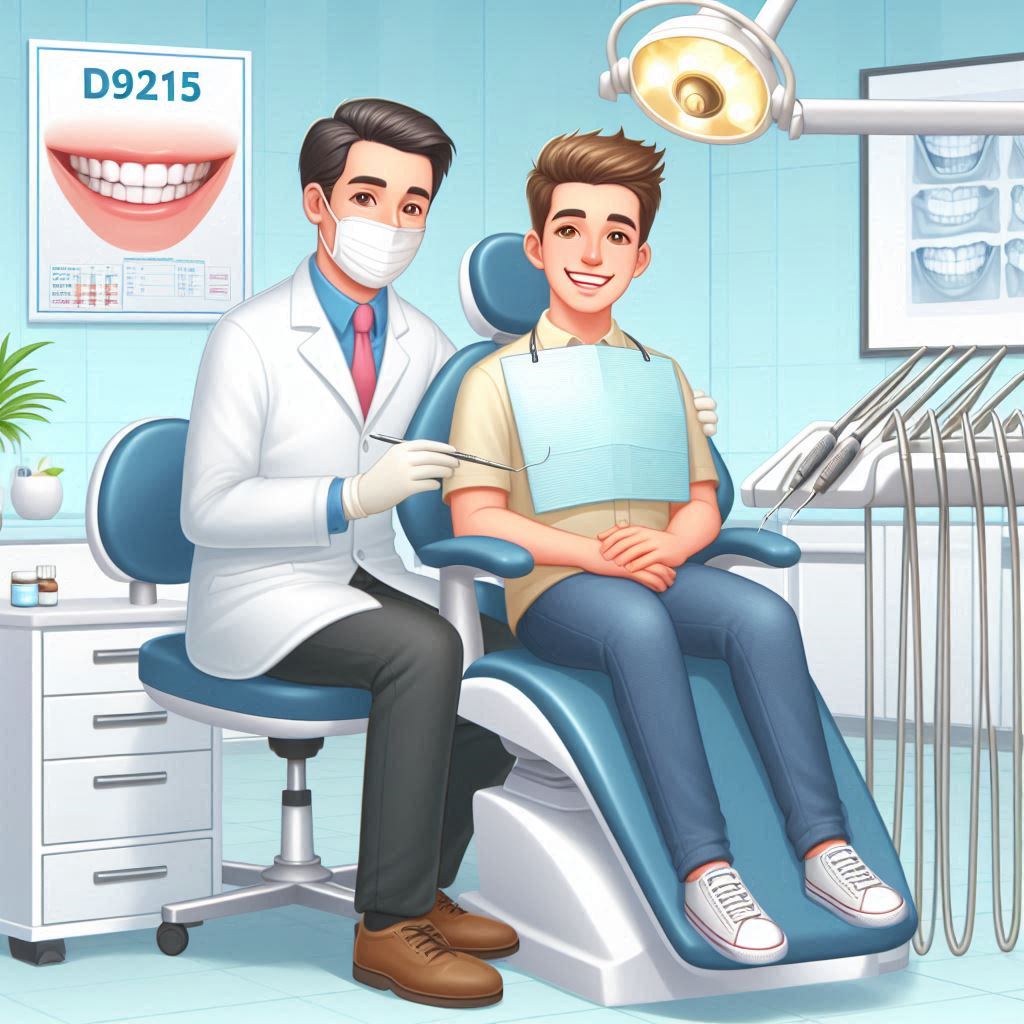D9215 Dental Code: Local Anesthesia in Dentistry
Local anesthesia is a cornerstone of modern dentistry, ensuring patient comfort during various dental procedures. The D9215 dental code specifically refers to local anesthesia not in conjunction with operative or surgical procedures, making it a unique billing entry in dental practices.
This comprehensive guide explores the D9215 code in detail, covering its definition, clinical applications, administration techniques, billing considerations, and more. Whether you’re a dental professional, student, or patient, this article provides valuable insights into this essential dental procedure.

2. What is the D9215 Dental Code?
The D9215 code is part of the American Dental Association (ADA) Current Dental Terminology (CDT) and is defined as:
“Local anesthesia not in conjunction with operative or surgical procedures.”
This means it is used when anesthesia is administered independently, such as for diagnostic purposes, pain management, or other non-surgical needs.
Key Features of D9215:
- Used when anesthesia is not linked to another procedure (e.g., fillings, extractions).
- Commonly applied in cases of temporomandibular joint (TMJ) pain, diagnostic injections, or emergency pain relief.
- Billed separately from surgical or restorative procedures.
3. Purpose and Clinical Applications of D9215
When is D9215 Used?
- Diagnostic Testing: To identify the source of oral pain.
- Therapeutic Pain Relief: Managing acute dental pain without immediate surgery.
- TMJ Disorders: Administering anesthesia to alleviate jaw discomfort.
- Pre-procedural Comfort: Numbing an area before an unrelated medical examination.
Example Scenario:
A patient presents with severe tooth pain but requires further diagnostics before treatment. The dentist administers local anesthesia (D9215) to relieve pain while planning further interventions.
4. Types of Local Anesthesia Used in Dentistry
The most common anesthetics used under D9215 include:
| Anesthetic Type | Duration | Common Uses |
|---|---|---|
| Lidocaine (2%) | 30-60 min | Standard dental procedures |
| Articaine (4%) | 60-90 min | Longer-lasting pain control |
| Mepivacaine (3%) | 45-90 min | Patients with cardiovascular issues |
| Bupivacaine (0.5%) | 2-8 hours | Extended pain management |
5. Procedure for Administering Local Anesthesia (D9215)
Step-by-Step Process:
- Patient Assessment: Review medical history and allergies.
- Anesthetic Selection: Choose based on duration and patient needs.
- Administration:
- Topical gel application for needle insertion comfort.
- Slow injection to minimize discomfort.
- Post-Injection Monitoring: Check for adverse reactions.
6. Indications and Contraindications
Indications:
- Unexplained oral pain diagnosis.
- Non-surgical pain management.
- Pre-procedural numbing for non-dental exams.
Contraindications:
- Allergy to anesthetic agents.
- Severe cardiovascular disease.
- Pregnancy (relative contraindication).
7. Potential Risks and Complications
| Complication | Prevention/Treatment |
|---|---|
| Allergic Reaction | Epinephrine auto-injector (EpiPen) |
| Nerve Damage | Use aspirating syringe technique |
| Hematoma | Apply pressure post-injection |
8. Patient Management and Comfort Techniques
- Behavioral Strategies: Tell-show-do method for anxious patients.
- Needle Alternatives: Vibrotactile devices (e.g., DentalVibe).
- Sedation Options: Nitrous oxide for extreme anxiety.
9. Billing and Insurance Considerations
- D9215 vs. D9210: D9215 is standalone; D9210 is for surgical anesthesia.
- Insurance Coverage: Some plans may reject D9215 if deemed unnecessary.
- Documentation Required: Detailed notes justifying medical necessity.
10. Comparison with Other Anesthesia Codes
| Code | Description |
|---|---|
| D9210 | Local anesthesia in conjunction with surgery |
| D9220 | Deep sedation/general anesthesia (first 15 min) |
| D9230 | Nitrous oxide analgesia |
11. FAQs
Q1: Can D9215 be billed with other procedures?
A: No, it is strictly for anesthesia not tied to another dental procedure.
Q2: Does Medicare cover D9215?
A: Typically no, as Medicare has limited dental coverage.
Q3: How long does local anesthesia last under D9215?
A: Varies by agent—anywhere from 30 minutes to 8 hours.
12. Conclusion
The D9215 dental code is essential for standalone local anesthesia in non-surgical contexts. Proper administration, billing accuracy, and patient comfort are critical for effective use. By understanding its applications, risks, and insurance implications, dental professionals can optimize patient care.


